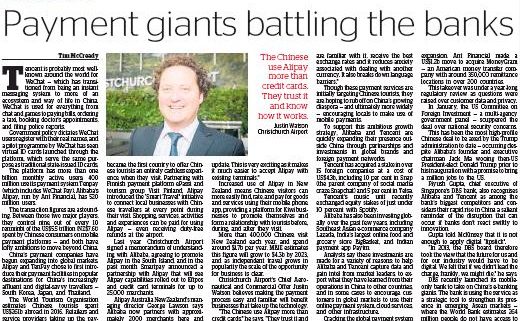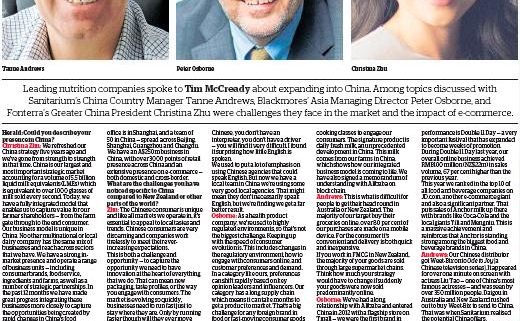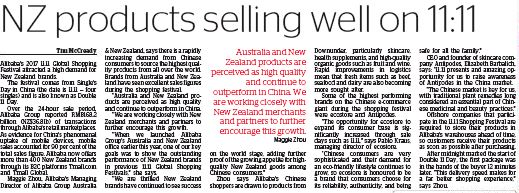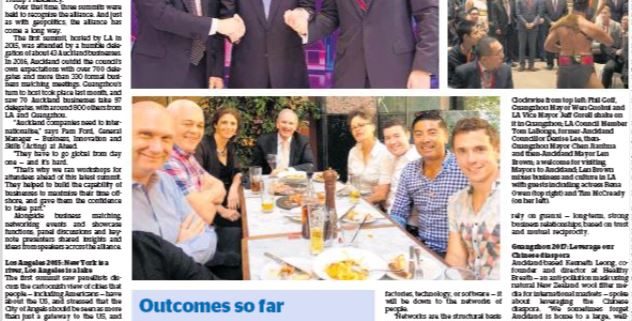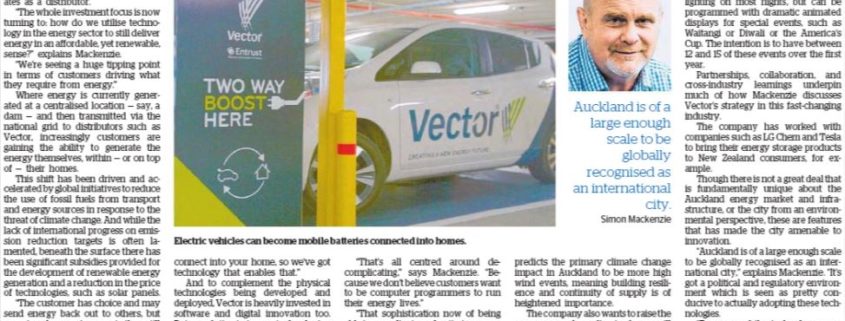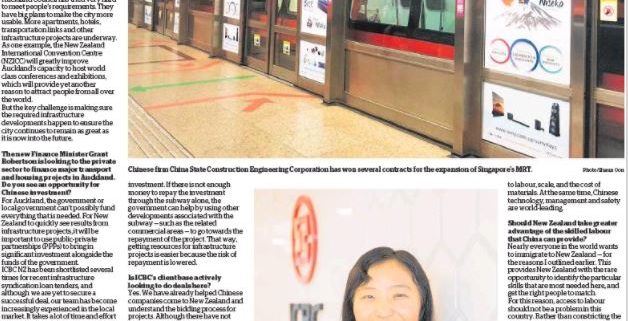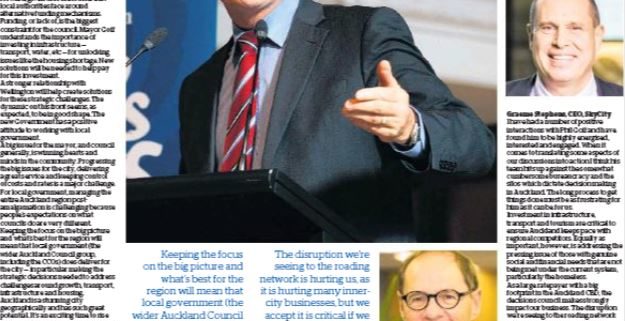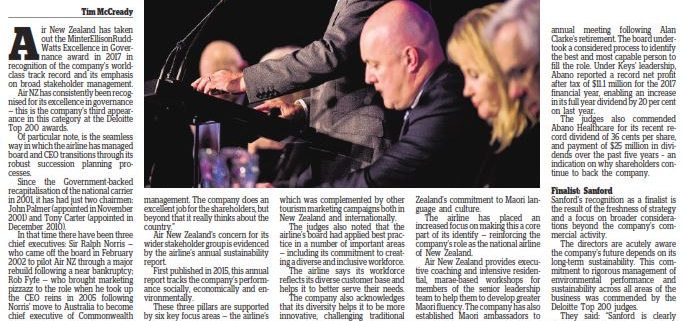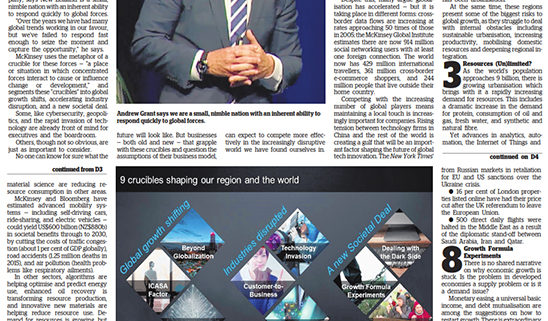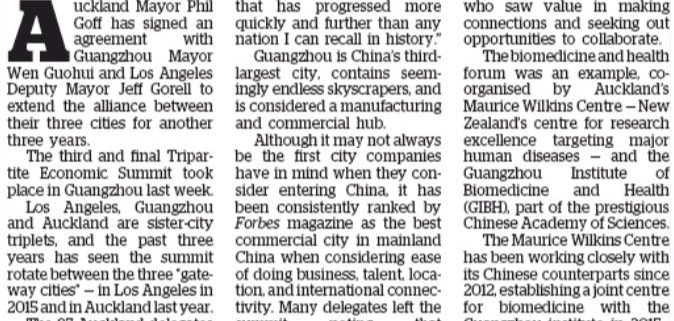China Business: Payment giants battling the banks (NZ Herald)
Tencent is probably most well-known around the world for WeChat — which has transitioned from being an instant messaging system to more of an ecosystem and way of life in China. WeChat is used for everything from chat and games to paying bills, ordering a taxi, booking doctor’s appointments, and filing police reports.
Government policy dictates WeChat users register with their real names, and a pilot programme by WeChat has seen virtual ID cards launched through the platform, which serve the same purpose as traditional state-issued ID cards.
The platform has more than one billion monthly active users; 400 million use its payment system Tenpay (which includes WeChat Pay). Alibaba’s Alipay, run by Ant Financial, has 520 million users.
The transaction figures are astounding. Between those two major players, they control nine out of every 10 renminbi of the US$5.5 trillion (NZ$7.6t) spent by Chinese consumers on mobile payment platforms — and both have lofty ambitions to move beyond China.
China’s payment companies have begun expanding into global markets. Alipay and TenPay chose to first introduce their payment facilities in popular destinations for China’s increasingly affluent and digital-savvy travellers — South Korea, Japan, and Thailand.
The World Tourism Organisation estimates Chinese tourists spent US$261b abroad in 2016. Retailers and service providers taking up the payment systems are hoping to entice Chinese shoppers to spend their renminbi with them.
Finland is an increasingly popular destination for Chinese tourists, and became the first country to offer Chinese tourists an entirely cashless experience when they visit.
Partnering with Finnish payment platform ePassi and tourism group Visit Finland, Alipay introduced the “Smart Travel” initiative to connect local businesses with Chinese travellers at every point during their visit. Shopping, services, activities and experiences can be paid for using Alipay — even receiving duty-free refunds at the airport.
Last year Christchurch Airport signed a memorandum of understanding with Alibaba, agreeing to promote Alipay in the South Island, and in the past month Smartpay announced a partnership with Alipay that will see Alipay capabilities rolled out to Eftpos and credit card terminals for up to 25,000 merchants.
Alipay Australia New Zealand’s managing director George Lawson says Alibaba now partners with approximately 2000 merchants here and expects this to grow dramatically.
“The recent Smartpay announcement will drive a lot of this growth as it gives Alipay access to tens of thousands of merchants with one software update. This is very exciting as it makes it much easier to accept Alipay with existing terminals.”
Increased use of Alipay in New Zealand means Chinese visitors can more easily find, rate, and pay for goods and services using their mobile phone app, providing a platform for Kiwi businesses to promote themselves and form a relationship with tourists before, during, and after they visit.
More than 400,000 Chinese visit New Zealand each year, and spend around $1.7b per year. MBIE estimates this figure will grow to $4.3b by 2023, and as independent travel grows in popularity the scale of the opportunity for business is clear.
Christchurch Airport’s Chief Aeronautical and Commercial Offer Justin Watson believes making the payment process easy and familiar will benefit businesses that take up the technology.
“The Chinese use Alipay more than credit cards,” he says. “They trust it and know how it works; our Chinese guests are more likely to spend with a business that offers Alipay than one that doesn’t.”
Lawson agrees: “The Alipay brand is a beacon for Chinese tourists as they are familiar with it, receive the best exchange rates and it reduces anxiety associated with dealing with another currency. It also breaks down language barriers.”
Though these payment services are initially targeting Chinese tourists, they are hoping to rub off on China’s growing diaspora — and ultimately more widely — encouraging locals to make use of mobile payments.
To support this ambitious growth strategy, Alibaba and Tencent are quickly expanding their presence outside China through partnerships and investments in global brands and foreign payment networks.
Tencent has acquired a stake in over 15 foreign companies at a cost of US$4.3b, including 10 per cent in Snap (the parent company of social media craze Snapchat) and 5 per cent in Telsa.
Tencent’s music unit recently exchanged equity stakes of just under 10 percent with Spotify.
Alibaba has also been investing globally over the past few years, including Southeast Asian e-commerce company Lazada, India’s largest online food and grocery store BigBasket, and Indian payment app Paytm.
Analysts say these investments are made for a variety of reasons: to help Alibaba and Tencent capture data and gain intel from market leaders, to export what they have learned from their operations in China to other countries, and in some cases to encourage customers in global markets to use their online payment system, cloud services, and other infrastructure.
Cracking the global payment system will lay the foundation to provide other services, including insurance, loans, and investment offerings.
Despite this growth in acquisitions, the US is starting to hit back at China’s expansion.
Ant Financial made a US$1.2b move to acquire MoneyGram — an American money transfer company with around 350,000 remittance locations in over 200 countries.
This takeover was under a year-long regulatory review as questions were raised over customer data and privacy.
In January, the US Committee on Foreign Investment — a multi-agency government panel — scuppered the deal over national security concerns.
This has been the most high-profile Chinese deal to be axed by the Trump administration to date — occurring despite Alibaba’s founder and executive chairman Jack Ma wooing then-US President-elect Donald Trump prior to his inauguration with a promise to bring a million jobs to the US.
Piyush Gupta, chief executive of Singapore’s DBS bank, also recognises Alibaba and Tencent as among the bank’s biggest competitors and considers their rapid rise in China a salient reminder of the disruption that can occur if banks don’t react swiftly to innovation.
Gupta told McKinsey that it is not enough to apply digital “lipstick”.
“In 2013, the DBS board therefore took the view that the future for us and for our industry would have to be digital. We felt that if we didn’t lead the charge, frankly, we might die,” he says.
DBS recently launched its mobile-only bank to take on China’s e-banking giants. The bank is using the service as a strategic tool to strengthen its presence in emerging Asean markets — where the World Bank estimates 264 million people do not have access to banking facilities, and just 30 per cent of adults have debit cards.
The opportunity is significant, and the race to cash in is well and truly under way.

